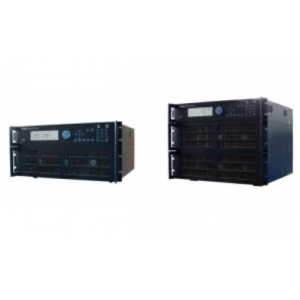
When selecting an AC/DC power supply, the process can be quite overwhelming due to the variety of options available on the market. Understanding your requirements and the different types of power supplies is crucial to ensuring your system runs smoothly. Whether you’re powering industrial equipment, electronics, or small devices, making an informed choice is key to maximizing performance and efficiency.
This guide will walk you through the factors to consider when selecting the best AC/DC power supply for your needs. We’ll break down the essential elements, provide expert tips, and link you to useful resources like this detailed guide on AC/DC power supplies to help you make the right decision.
1. Understand Your Power Supply Requirements
Before you dive into the specifications, it’s essential to assess what your needs are. The requirements can vary based on the application, and understanding them can help narrow down your choices:
- Output Voltage: Determine whether you need a fixed or adjustable output voltage. For sensitive electronics, having the option to adjust the voltage can prevent damage and ensure optimal performance.
- Output Current: This refers to how much current the power supply can deliver. Ensure that the power supply provides enough current to meet the demands of your device without overheating or causing instability.
- Power Rating (Wattage): The total power required is a critical consideration. Multiply the voltage and current to determine the wattage required for your application.
- Efficiency: Look for power supplies with higher efficiency ratings, as these consume less energy and produce less heat, extending the life of your equipment and reducing operational costs.
- Size & Form Factor: Depending on the space constraints of your setup, choose a power supply that fits your environment.
For more insights on these factors, check out this resource on power supply essentials.
2. Types of AC/DC Power Supplies
Power supplies can be broadly classified into different categories based on their design and functionality. Here’s a quick rundown of the most common types:
Linear Power Supply
- Pros: Simple design, less noise, and reliable output.
- Cons: Lower efficiency and bulkier.
- Best for: Sensitive analog circuits and applications requiring low-noise, high-stability output.
Switching Power Supply (SMPS)
- Pros: High efficiency, smaller size, and lighter weight.
- Cons: More complex and prone to electromagnetic interference (EMI).
- Best for: Digital devices, computers, and high-power applications.
Unregulated vs Regulated Power Supplies
- Regulated Power Supply: Maintains a consistent output voltage regardless of load changes. Ideal for sensitive electronics.
- Unregulated Power Supply: Output voltage can vary with load changes. More suitable for general applications where fluctuations are not a concern.
Selecting between these types depends on the critical nature of voltage stability and the application’s power demands. For further comparison of these power supply types, refer to this article on power supply options.
3. Safety Features and Protection
Safety should always be a top priority when choosing a power supply. Here are the essential protection features to look for:
- Overcurrent Protection: Prevents the power supply from delivering too much current, which can cause overheating or damage to connected devices.
- Overvoltage Protection: Safeguards your equipment from power surges or spikes that could cause irreversible damage.
- Short-Circuit Protection: Automatically shuts off the power in case of a short circuit, protecting both the power supply and your device.
- Thermal Shutdown: Prevents overheating by automatically shutting down the power supply if it gets too hot.
- Surge Protection: Reduces the risk of damage from power surges or sudden voltage spikes.
Considering these safety features will ensure the longevity and reliability of both your power supply and connected devices.
4. Consider Environmental Factors
When choosing a power supply, consider the environment in which it will operate. Environmental factors such as temperature, humidity, and dust levels can affect the performance and lifespan of the unit.
- Temperature Range: Ensure the power supply can operate in the range required for your setup.
- IP Rating: If the power supply will be exposed to dust, moisture, or water, an IP (Ingress Protection) rating will be crucial. Choose a unit with a high IP rating for harsher environments.
- Noise Levels: If your application requires low-noise operation, consider a power supply with low EMI emissions, especially for sensitive or audio equipment.
5. Regulatory Standards and Certifications
Power supplies must comply with various international standards to ensure their safety, performance, and reliability. Here are some common certifications to look for:
- CE Marking: Indicates compliance with European safety standards.
- UL Certification: Ensures the power supply meets North American safety standards.
- RoHS Compliance: Ensures the power supply is free from hazardous materials like lead and mercury.
- FCC Certification: Ensures that the power supply meets U.S. standards for electromagnetic interference (EMI).
Make sure to check for these certifications to ensure the power supply is compliant with safety and environmental standards. For additional insights into these standards and more, explore this page for further guidance.
6. Cost and Warranty
The price of a power supply can vary greatly based on its features, brand, and type. However, keep in mind that the cheapest option may not always provide the best value in the long run.
- Initial Cost: While it’s tempting to choose the lowest-cost option, ensure that the power supply meets all your requirements in terms of voltage, current, and safety features.
- Warranty: Opt for a power supply that comes with a warranty. A longer warranty period can be an indication of the manufacturer’s confidence in the product’s durability and reliability.
When comparing prices, remember that an initial investment in a higher-quality power supply can save you from costly repairs or replacements down the line.
7. Brand Reputation and Support
Choosing a reputable brand ensures a higher-quality product and better customer service. Well-known brands tend to offer more reliable products, extensive documentation, and customer support to help with any issues. Always check reviews, ratings, and customer feedback before making your final decision.
Conclusion
Selecting the best AC/DC power supply for your needs requires careful consideration of your specific application requirements. By understanding factors like output voltage, current, and efficiency, as well as assessing safety features, environmental conditions, and regulatory compliance, you can choose a power supply that will meet your expectations.
If you’re still uncertain about your choice, refer to trusted sources like this guide on AC/DC power supplies for further details. With the right information and a methodical approach, you’ll be able to make an informed decision that ensures the smooth operation of your devices and systems.







